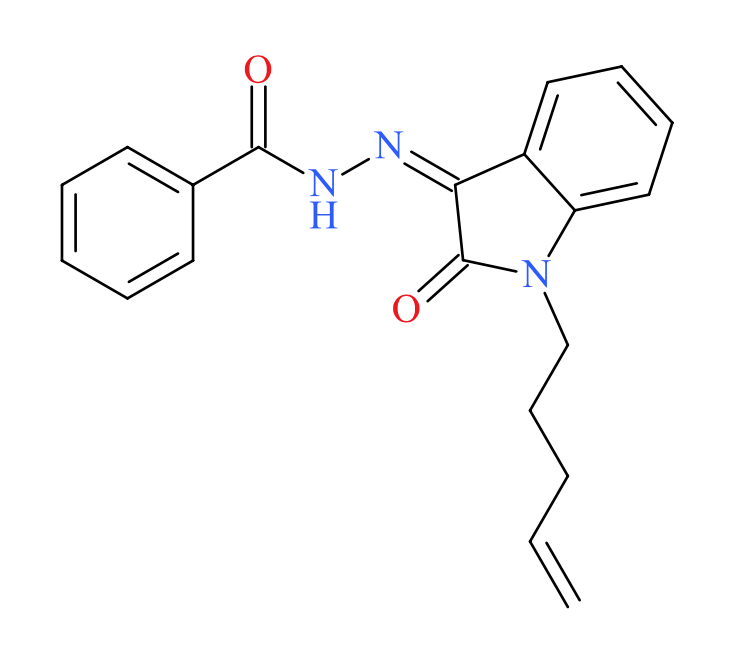BZO-4en-POXIZID
BZO-4en-POXIZID is classified as a synthetic cannabinoid. Synthetic cannabinoids have been reported to cause psychoactive effects similar to delta-9-tetrahydrocannabinol (THC). Synthetic cannabinoids have caused adverse events, including deaths, as described in the literature. Closely related analogue BZO-HEXOXIZID (MDA 19) was synthesized and studied in the late 2000’s by scientists at the University of Texas M. D. Anderson Cancer Center.1,2,3 BZO-HEXOXIZID is reported to be a potent and selective cannabinoid receptor 2 (CB2) agonist. Several closely related analogues make up this new generation of synthetic cannabinoids, some of which have been studied and reported.3,4 Scientists at Cayman Chemical and the CFSRE developed a new naming convention for this subclass, calling these new drugs the “OXIZIDs”.5 OXIZID represents the core/linker region of this new synthetic cannabinoid structure. The OXIZID subclass recently emerged among the recreation drug supply internationally, seemingly as replacements after a synthetic cannabinoid class-wide ban implemented by China in July 2021 which included most traditional indole and indazole structural scaffolds.6 To date, multiple OXIZID analogues have been identified worldwide, most of which are unstudied with pharmacological and human effects undetermined. Currently, no analogues of the OXIZID subclass are scheduled substances in the United States.
- Class:
- Cannabinoid
- Appearance:
- Plant-Like Material
- Formula:
- C20H19N3O2
- MW:
- 333.4
- [M+]:
- 333
- [M+H]+:
- 334.1550
- IUPAC:
- N-[(Z)-(2-oxo-1-pent-4-enyl-indolin-3-ylidene)amino]benzamide
- Report Date:
- May 19, 2022









